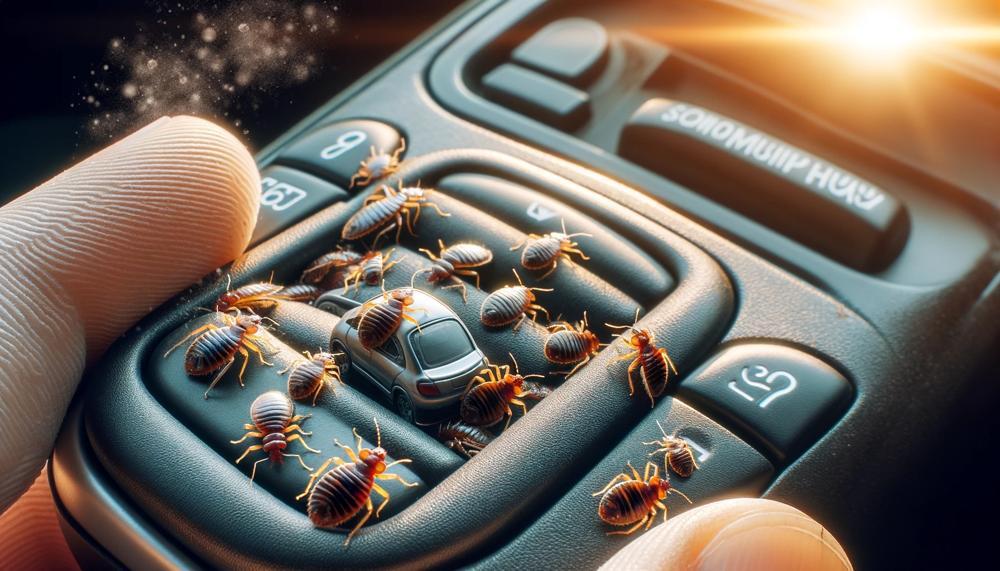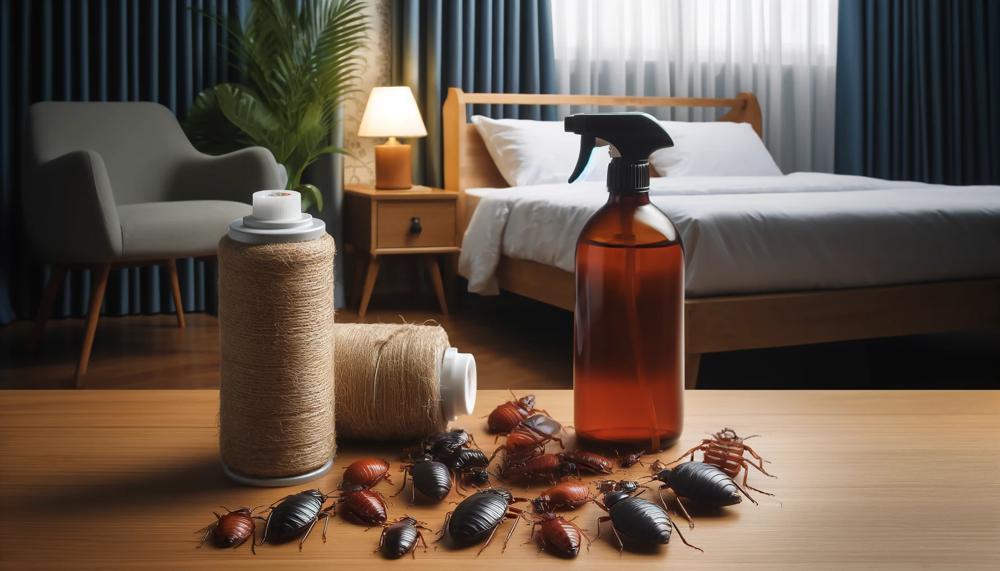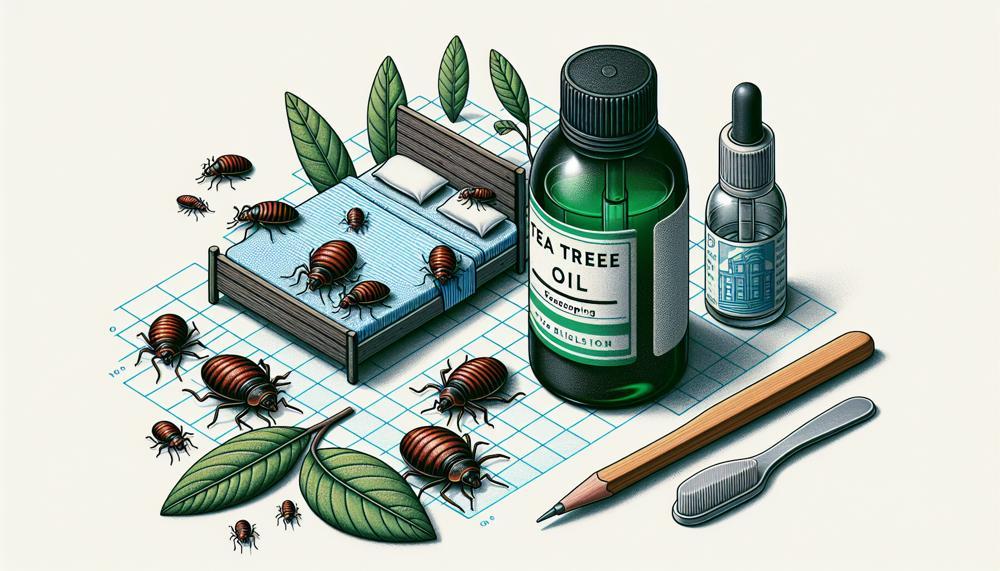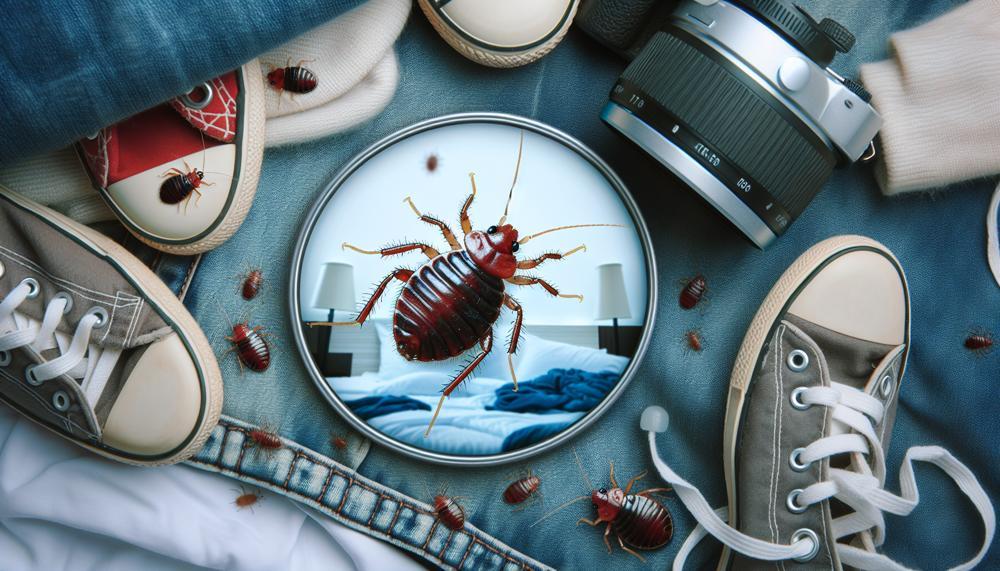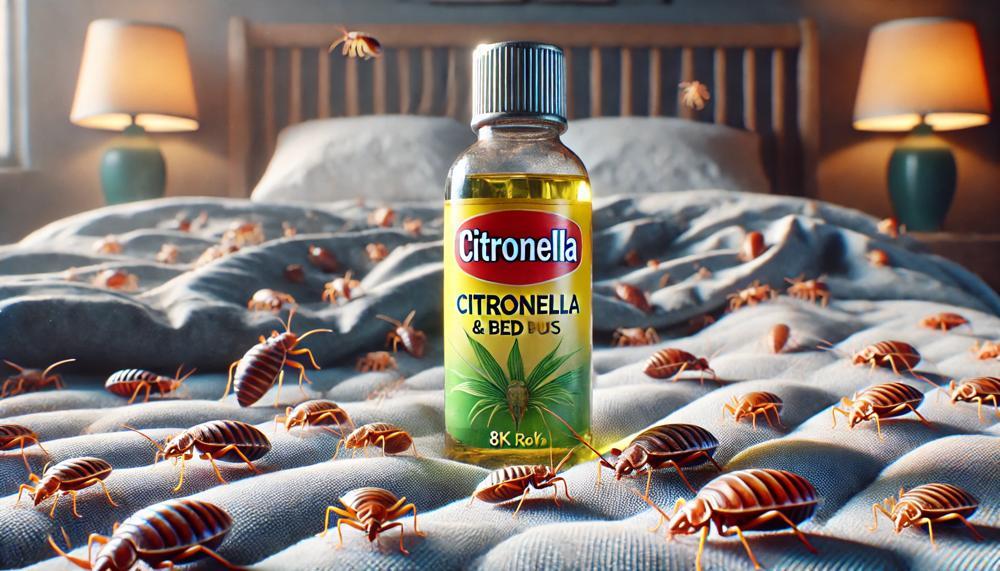Did you know that a female bed bug can lay over one hundred eggs herself? Imagine a few of those riding along with you in your car. It’s scary, right? Bed bugs don’t just live in our beds or homes; these tiny, clever travelers can make your daily journey a nightmare.
Let’s take a deep breath first before you think about taking drastic steps that could include drugs or hiring a professional. Both the earth and people have your back.
This helpful blog post will guide you through the world of natural ways to get rid of those annoying bed bugs for good. It will give you useful, eco-friendly ideas that don’t just cover up the problem but get to the root of it.
So, how to get rid of bed bugs in your car naturally?
Getting rid of bed bugs in your car naturally can be achieved through the following methods:
- Diatomaceous Earth: This is a natural powder made from tiny fossilized aquatic organisms. It’s non-toxic for humans and pets but lethal for bed bugs.
- Heat Treatment: Bed bugs can’t survive in temperatures over 113 degrees Fahrenheit. You can use a portable heater to raise the temperature in your car.
- Steam Cleaning: Both wet and dry steam cleaners can help kill bed bugs. They can also get into all the cracks and fabrics in your car where bed bugs might be hiding.
- Vacuuming: Regularly vacuum your car, paying special attention to cracks and crevices.
Get ready to transform your vehicle back into the comfortable, bug-free zone it should be, all while keeping things green and gentle on the environment. Buckle up, and let’s get started.
Table of Contents
Can Bed Bugs Live in Your Car?
Yes, bed bugs can indeed survive and thrive in a car environment. These crafty critters are known for their hitchhiking capabilities, making your vehicle an unexpected venue for their unwelcome residency.
Let’s break it down with some nitty-gritty details and practical advice on keeping these pests at bay.
Survival Factors for Bed Bugs in Cars
| Factor | Description | Implication |
| Temperature | Bed bugs prefer warm environments but can enter a dormant state in cold temperatures. | Your car’s interior can provide a cosy haven, especially if parked in the sun or during warmer months. |
| Food Source | These parasites feast on human blood. | Your presence in the car is enough to sustain them, though they can survive months without feeding. |
| Hiding Spots | They excel at playing hide and seek, favouring cracks and crevices. | Cars have ample hiding spots, from upholstery seams to beneath floor mats. |
Detecting and Dealing with Bed Bugs
Spotting these wee beasties requires a keen eye and patience. Look out for tiny dark spots on upholstery (excrement), shed skins, and the bugs themselves hiding away. Flashlights and magnifying glasses are your allies here.
If you find signs of an infestation, don’t throw in the towel.
- Vacuuming: A thorough hoovering can suck up any visible bugs or eggs. Focus on nooks and crannies.
- Steam Cleaning: High heat kills bed bugs. Steam cleaning your car’s interior can be an effective method to eradicate them.
- Heat Treatment: On a hot day, leaving your car in the sun with windows slightly open can raise the temperature high enough to kill bed bugs. Remember, safety first.
- Nuvan ProStrips: These contain a pesticide that releases vapour deadly to bed bugs. Use with caution and follow instructions meticulously.
- Keep your car clutter-free to reduce hiding spots.
- Regularly inspect and clean your car, especially after trips or carrying passengers.
- Consider preventive measures like traps or monitoring devices.
Preventing Future Infestations
So, while your car might not be the first place you’d expect to find bed bugs, it’s certainly within the realm of possibility.
With vigilance and proper cleaning techniques, you can keep these biters at bay or send them packing if they’ve already made themselves comfortable.
Signs of Bed Bugs in a Car
Detecting bed bugs in your motor can be a bit like playing detective – you’ve got to know what clues to look for.
Here’s a rundown of the telltale signs that these cheeky little critters have taken up residence in your ride:
| Sign | Description | Action |
| Rust-Coloured Stains | Small, reddish-brown stains on your upholstery or fabric, often a sign of bed bugs being squished. | Inspect your car’s seats and fabric areas closely, using a flashlight if necessary. |
| Eggs or Eggshells | Tiny white specks in crevices or seams, indicating bed bug reproduction. | Use a fine-tooth comb or a similar tool to check tight spots and seams. |
| Dark Spots or Smears | Can be bed bug excrement. These appear as small, dark smudges on surfaces. | Clean affected areas thoroughly and monitor for new signs of activity. |
| Musty Odour | A peculiar scent similar to coriander or almonds could signal a heavy infestation. | Keep your nose peeled for any unusual smells in your car, especially in warm weather. |
| Live Bed Bugs | Seeing the actual bugs crawling around during the day can indicate a significant problem. | In case of spotting live bed bugs, consider professional pest control options immediately. |
| Itchy Bites | Finding unexplained bites on your skin after spending time in your car. | Monitor any bites for patterns and consider medical advice for severe reactions. |
| Blood Stains | Mysterious blood spots on sheets, clothing, or other items in your car. | Check for any hidden pests and clean all fabric items regularly. |
| Bed Bug Escapees | Finding bed bugs crawling out of luggage or bags after a trip indicates they’ve hitched a ride. | Thoroughly inspect and clean all items brought into your car from travels or second-hand purchases. |
Spotting just one of these signs might not mean you’re dealing with bed bugs, but if you’re ticking off several boxes, it’s time to take action.
Start with a good clean-out—vacuuming and steam cleaning can do wonders.
How to Inspect a Car for Bed Bugs
When inspecting a car for bed bugs, attention to detail is crucial as these critters are notorious for their hide-and-seek skills. Focus your efforts on the following key areas:
| Area | Description | Reason for Inspection |
| Seats (including under the seats) | Check the seams, crevices, and under the seat cushions. | Bed bugs prefer dark, hidden spots; seams and crevices offer perfect hiding spots. |
| Floor Mats and Carpets | Inspect underneath and around the edges, especially where the carpet meets the car’s interior walls. | Carpets and mats provide a warm environment that bed bugs seek for laying eggs. |
| Dashboard Area | Focus on gaps, within vents, and around controls or storage compartments. | The warmth from the car’s electronics can attract bed bugs to these areas. |
| Glove Box and Console | Examine inside, paying close attention to joints and corners. | Isolated and less disturbed by daily activities, making them ideal for bed bugs to settle in. |
| Door Panels and Pockets | Inspect around the window controls, door handles, and storage pockets. | Door panels and pockets are often overlooked, offering a safe haven for bed bugs. |
| Trunk/Cargo Area | Look into corners, under the carpet liner, and side panels. | A cluttered trunk can provide numerous hiding spots for bed bugs. |
| Ceiling Upholstery (especially near lights) | Check around light fixtures and where the upholstery might be sagging or torn. | The secluded nature of ceiling spaces provides an undisturbed area for bed bugs to dwell. |
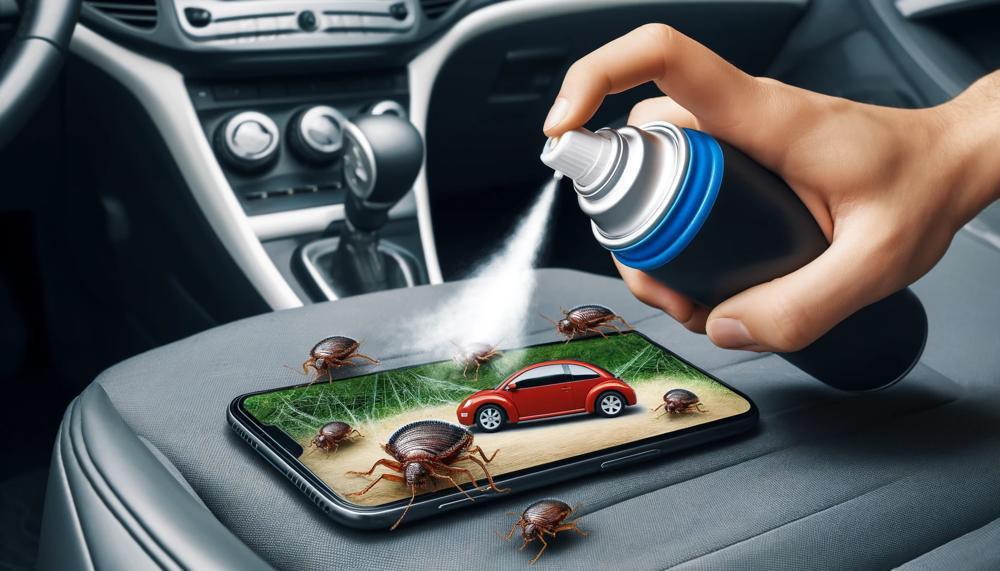
Remember, these pesky critters are masters of concealment. Using a flashlight and magnifying glass will enhance your ability to spot them or signs of their presence, such as tiny eggs, shed skins, or faecal spots.
Regular vacuuming and steam cleaning can help dislodge any hitchhikers or their remnants from these critical areas.
Bed Bug Car Treatment
To tackle the pesky problem of bed bugs in cars, several natural methods stand out for their effectiveness.
Each method has its specific approach and level of efficacy.
Here’s a rundown on some of the most effective natural bed bug treatments for vehicles:
| Method | Description | Effectiveness |
|---|---|---|
| Heat Exposure | Utilizing the car’s inherent heat by parking it in direct sunlight or employing devices like portable heaters to elevate the temperature. | Highly effective, as bed bugs cannot withstand extreme temperatures. However, it may not reach all hiding spots. |
| Essential Oils | Applying a concoction of essential oils such as lavender, peppermint, and tea tree oil, known for repelling and exterminating bed bugs. | Moderately effective for repelling bed bugs and potentially killing them but might not eradicate an entire infestation. |
| Diatomaceous Earth (DE) | Spreading DE around the car’s interior to dehydrate and kill bed bugs through its abrasive action on their exoskeletons. | High efficacy in exterminating bed bugs over time but requires careful application and cleanup. |
| Steam Cleaning | Employing steam cleaners to apply high-temperature steam to fabric surfaces, effectively killing bed bugs and their eggs. | Very effective for surfaces treated but might not reach deeply hidden bed bugs. |
Each method has its strengths, with heat exposure being among the most potent due to bed bugs’ inability to withstand high temperatures.
Essential oils offer a more preventive approach with moderate success; they can repel and sometimes kill bed bugs but might not completely eliminate them. Diatomaceous earth is a powerful agent against bed bugs, causing physical damage that leads to dehydration and death; however, it requires patience and thorough application.
Steam cleaning delivers a direct hit with high heat, effectively killing bed bugs and their eggs on contact but may need supplementing with other methods for comprehensive treatment.
How to Prevent Bed Bugs in Your Car
To ward off bed bugs from your car using natural methods, it’s crucial to keep the interior pristine and monitor for any signs of these unwelcome guests.
| Natural Method | Description | Frequency |
|---|---|---|
| Clean and Declutter | Ensure your car’s interior is free of clutter where bed bugs might hide. Regular tidying prevents these pests from finding a cozy spot. | Daily |
| Vacuum and Steam Clean | Use a vacuum to suck up any critters or eggs, especially in hard-to-reach spots. Follow up with a steam cleaner to kill bed bugs with heat. | Weekly |
| Manage Personal Items | Avoid leaving clothes or bags in the car for too long. Store them properly to reduce bed bug hitchhiking opportunities. | As needed |
| Regular Inspections | With a flashlight and magnifying glass, scout for signs of bed bugs like shed skins or fecal spots, focusing on nooks and crannies. | Monthly |
| Use Traps and Monitors | Place bed bug traps in strategic locations within your car to catch any wandering pests and monitor the situation. | As part of ongoing vigilance |
Remember, the key to preventing bed bugs in your car lies in diligence. Regular cleaning, careful management of personal items, and keen inspections can keep these biters at bay.
After any treatment or preventative measures, keeping an eye out for early signs of a comeback is paramount.
When to Call a Pro
When it comes to battling bed bugs in your car, the timing of calling in a professional can make all the difference. Here’s the straight dope: if you’ve spotted any signs of bed bugs, such as sinister small dark spots, shed skins, a musty odor that’s not your gym bag forgotten in the boot, or the actual critters skulking about, it’s high time to ring up a pest management professional (PMP).
Why, you ask? Well, these bloodthirsty hitchhikers are not only a nuisance but are also astoundingly resilient and can quickly turn your car into their own personal Airbnb. Attempting to tackle the issue on your lonesome with over-the-counter sprays or home remedies might seem like a budget-friendly option at first glance. However, this approach often ends up being as effective as using a water pistol to put out a bonfire.
Here’s a brief rundown on why and when to call in the cavalry:
| Signs Detected | Action | Reason |
| Small dark spots (bed bug excrement) | Call a Pro Immediately | Indicates an active infestation that could spread. |
| Shed skins or live bugs | Call a Pro Immediately | Visible evidence of bed bugs; DIY methods likely won’t cut it. |
| Musty odors | Consult a Pro | A sign of a possibly large infestation hidden away. |
| After DIY Treatment with no success | Call a Pro Without Delay | Professional treatment is more thorough and often necessary for complete eradication. |
A seasoned PMP brings to the table not just potent insecticides that you can’t get your hands on but also years of experience and cunning strategies to outwit these pests. They understand that this war against bed bugs is seldom won with a single battle.
Prepare yourself for multiple visits as these relentless invaders often require several treatments to bid adieu permanently.
Conclusion
Starting a natural journey to get rid of bed bugs in your car isn’t just about making your daily trips more comfortable; it’s also about reclaiming your space from unwanted guests without sacrificing your environmental ethics. This interesting conversation has led to a web of ideas that combine science and nature, giving people who choose the green path hope.
We’ve looked at a wide range of natural remedies that can help for more than a short time, from using heat to kill to using essential oils and diatomaceous earth to help in more gentle ways.
The main idea behind our research is not just the collection of tools we have, but also the concept of protection. It’s a complete plan that includes careful cleaning, smart tidying, and regular checks to protect your car from these tough invaders.
Once you know this, it’s easy to see how to move forward. Use these natural ways to help you fight bed bugs, and don’t forget to do regular checks and balances.

